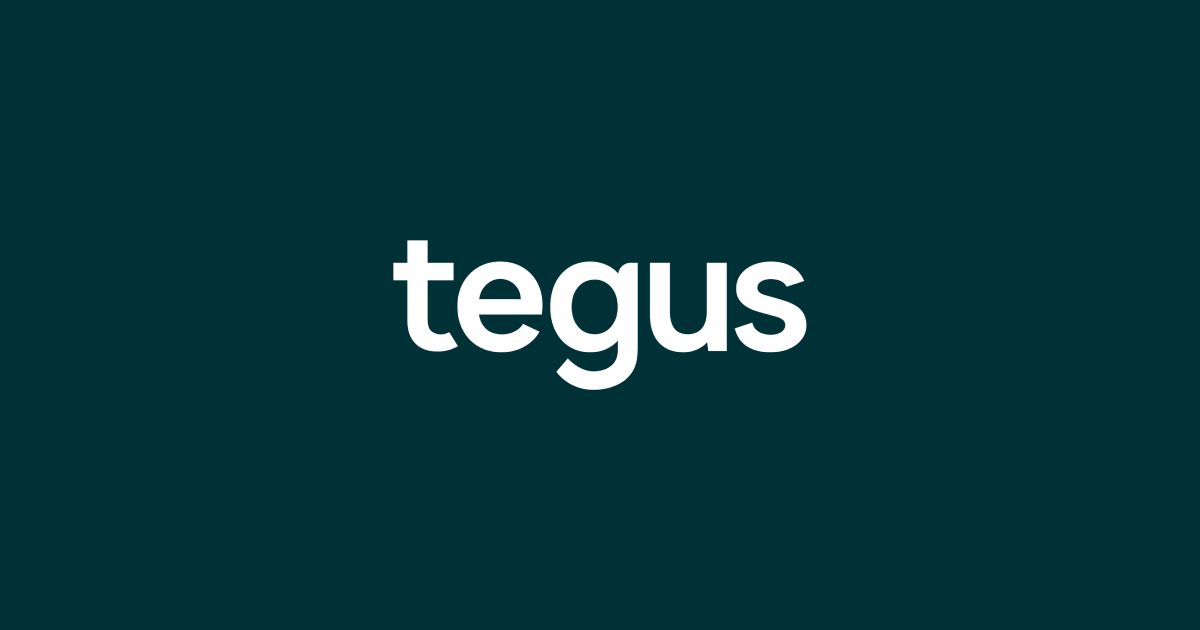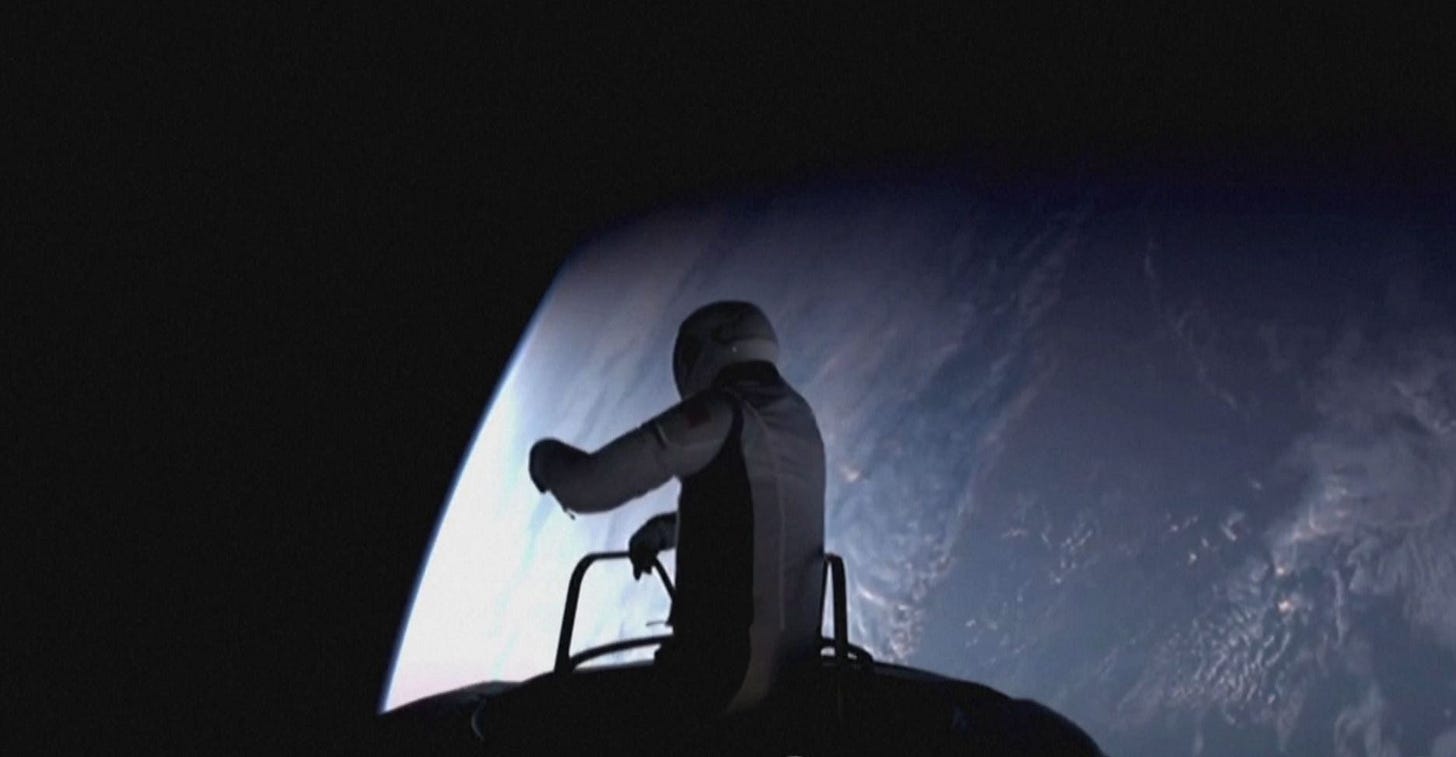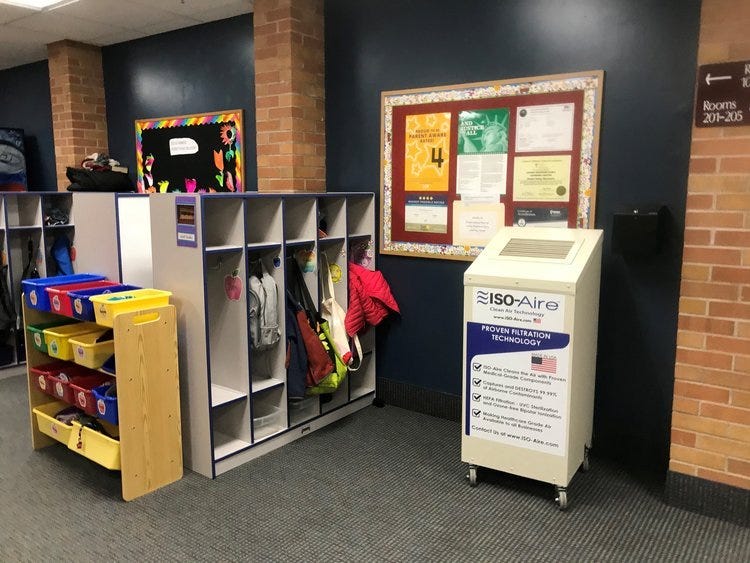Weekly Dose of Optimism #111
Polaris Dawn, Lithium Pioneer, Chai-1, PaperQA2, Daycare Air Purifiers, BONUSES
Today’s Not Boring is brought to you by… Tegus
There’s only a small handful of tools I use every time I write a Deep Dive. Tegus is one of them. It’s the best way to understand a company or industry like the insiders do, in their own words.
I’m in the middle of writing a Deep Dive on one of the most complex companies I’ve written about to date, and I spent two hours on Tegus Wednesday reading interviews with their customers. It would have been longer, but Tegus now summarizes and bullets each transcript right at the top of each one.
Tegus is full of transcripts of conversations with insiders and executives in any industry you can think of. It boasts 75% of the world’s private market transcripts. If you want to learn about energy, space, biotech, name it, from the people who actually work and buy in those markets, Tegus is the spot.
With Tegus, you gain access to the pulse of the private markets – with perspectives and detailed financials you won’t find anywhere else. There’s a reason the world’s best private market investors use Tegus, and as a smart, curious Not Boring reader, you can get access to the Tegus platform today:
Hi friends 👋,
Happy Friday and welcome back to our 111th Weekly Dose of Optimism. Coming into the end of this week, I didn’t have a plan for what I was going to write about — I of course had concepts of a plan — but no real plan. But then, as always, we humans pulled through. Private spacewalks, AI models of scientific research, lithium pioneers, and much, much more.
Let’s get to it.
(1) SpaceX employee, tech billionaire conduct first spacewalk in Polaris mission
Joey Roulette and Gerry Doyle for Reuters
Two astronauts from a SpaceX capsule in Earth's orbit carried out the world's first private spacewalk on Thursday, tethered to the Crew Dragon spacecraft in the vacuum of space while two others watched from inside, hundreds of miles from Earth.
Two nights ago, SpaceX pulled off the first private spacewalk in history and took humans farther out in space than we’ve gone in over five decades. Jared Isaacman, the billionaire founder of Shift4 payments (and star of this Netflix show) and SpaceX engineer, Sarah Gillis, were the two private astronauts aboard the mission.
The SpaceX Polaris missions are a series of private spaceflight missions aimed at advancing human spaceflight capabilities and conducting scientific research. Polaris is a collaboration between SpaceX and Isaacman…and I guess fronting some cash got Isaacman the exclusive ticket to be the first civilian to walk in space ever.
The Polaris missions are comprised of three missions: Polaris Dawn (the aforementioned mission), Mission II (an extension of Dawn), and Mission III (the first human spaceflight of SpaceX’s Starship vehicle). For SpaceX and Isaacman, Dawn was one not-so small step for Polaris and one giant leap for mankind.
(2) The Lone Star Lithium Boom
Russell Gold for Texas Monthly
The brine containing the most lithium he’s found in North America, rivaling the best in the world, lies beneath a one-hundred-mile swath of northeast Texas and southern Arkansas. It’s a mostly rural area of soaring pines and muddy bayous. Burba’s home, where he and Carol moved in 2021 to be nearer her aging parents, sits smack in the middle of it.
The race is on to turn this area—home to a subterranean limestone formation known as the Smackover, once a productive oil field—into a globally significant lithium producer.
We’re going to need a lot more lithium. Like hundreds of thousands of tons more lithium.
Thankfully, we have people like John Burba among us. Back in the 90s, the Texan chemist invented a method called Direct Lithium Extraction (DLE) that could revolutionize lithium mining, making it faster, cheaper, and more environmentally friendly. His technology uses a fiber-reinforced polymer cylinder filled with granules to extract lithium from brine in less than an hour, compared to the months or years required by traditional methods. Today, DLE is used in some parts of the world, but Burba is now bringing it to the U.S. in a potentially big way.
Burba's company recently launched the first commercial DLE lithium mine in the U.S., specifically in Texas and Arkansas. The two states sit atop the Smackover formation, a subterranean limestone reservoir rich in lithium-containing brine. This brine has relatively high concentrations of lithium, especially in northeast Texas region, where levels rival some of the best deposits worldwide.
If Burba is successful, it could significantly boost lithium production in the U.S., reducing reliance on foreign sources and supporting the rapid growth of the electric vehicle and renewable energy markets.
We need more John Burbas.
(3) Introducing Chai-1: Decoding the molecular interactions of life
From The Chai Discovery Team
We’re excited to release Chai-1, a new multi-modal foundation model for molecular structure prediction that performs at the state-of-the-art across a variety of tasks relevant to drug discovery. Chai-1 enables unified prediction of proteins, small molecules, DNA, RNA, covalent modifications, and more.
Chai Discovery introduced Chai-1, an AI model for predicting the structures and interactions of various molecules, including proteins and DNA, which is crucial for drug discovery and biomedical research. Chai-1 offers improved accuracy over existing models, like DeepMind’s AlphaFold models, and can predict molecular structures using single sequences, making it more versatile and accessible.
The model is freely available for commercial use via a web interface, and its code is released for non-commercial purposes, aiming to foster collaboration across research and industry.
Today, drug discovery is a extremely complex, multi-step process and the idea that we can totally outsource it to AI is a little far flung. Zach Weinberg, on the new podcast “This Won’t Last," offered a cooling perspective on AI’s impact on drug discovery. But using models like Chai-1 (and the inevitable more advanced models that follow it from folks like Chai Discovery and AlphaFold), can carry a lot of the load and hopefully overtime increase the velocity and volume of drug discoveries.
(4) Language Agents Achieve Superhuman Synthesis of Scientific Knowledge
From FutureHouse
Introducing PaperQA2, the first AI agent that conducts entire scientific literature reviews on its own. PaperQA2 is also the first agent to beat PhD and Postdoc-level biology researchers on multiple literature research tasks, as measured both by accuracy on objective benchmarks and assessments by human experts. We are publishing a paper and open-sourcing the code. This is the first example of AI agents exceeding human performance on a major portion of scientific research, and will be a game-changer for the way humans interact with the scientific literature.
Speaking of AI taking on a larger load of scientific research, the team at FutureHouse unveiled PaperQA2. We’ve covered how AI will impact scientific research before, but PaperQA2 stands out for a number of reasons:
Automated Literature Reviews: It's the first AI agent capable of conducting comprehensive scientific literature reviews independently.
Superhuman Performance: It outperform PhD students and postdoctoral researchers in literature review tasks.
High-Accuracy RAG: The tool utilizes high-accuracy retrieval augmented generation (RAG) techniques, focusing specifically on scientific literature.
Versatile Input Handling: It’s multi-modal, meaning it can process information from various sources, including PDFs and text files (which can include raw HTML).
Claim Extraction and Verification: It can extract claims from papers and cross-reference them against the existing literature to identify potential contradictions.
PaperAQ2 (and subsequent models) could significantly streamline the scientific research process and help scientists navigate and synthesize the vast body of scientific research, leading to faster and more breakthroughs.
Man science is going to be crazy in a couple of years.
Hanna Terävä for YLE
Contrary to expectations, it was found that simply purifying the air in daycares reduced children's illnesses by as much as 18.2%. The age and gender of the children did not affect the number of infections.
I’m not a parent. But I’m around enough parents to know that a top 3 complaint during the first years of their children’s lives is that the kids are always sick and, as a result, the parents are always sick. You don’t need to live in Park Slope to understand this.
Thankfully, a two-year study in Helsinki daycares found that purifying the air reduced children's illnesses by 18.2%. The findings primarily challenge the belief that daycare illnesses mainly spread through droplets and contact. The study suggests a significant portion of infections are airborne, meaning that air purification systems could be an effective and cost-friendly way of reducing daycare (and other public area) sickness.
Fewer kids getting sick at daycare is a win in its own right. But when you extrapolate out the true costs of a sick kid, the benefit is greater — parents will get less sick and will need to take off less time from work to care for their children and themselves.
Then, the only issue will be, what will these new parents talk about all the time? I guess we’ll always have sleep.
Bonuses
Packy here. After Dan sent me this draft, the hits just kept on coming, so I’m going to call them out ever so briefly.
First, Anduril announced Barracuda-M — “the most producible cruise missiles on the market” — with this absolute banger of a video that I’ve been playing on repeat for the past 18 hours.
The company heard the message that America can’t produce mass at the same scale as China, and it took that personally. Not only are Barracudas designed to be produced faster and more cheaply, they’re able to work together on top of Anduril’s Lattice OS.
The irony is that the more weapons you’re able to produce, the fewer you’ll actually have to use. Here’s to thousands of Barracuda’s sitting on the shelf, just deterring.
Then, OpenAI released its new o1 model series, the long-awaited 🍓, fka Q*, rumors of which first emerged back when Sam Altman was fired and re-hired. This, some thought, is what Ilya saw.
The short explanation (read Noam Brown’s thread for more detail) is that the o1 models are much, much better at reasoning than previous models because they’re trained to pause and think before they respond. “The longer it thinks, the better it does on reasoning tasks.” Probably a lesson in there for us humans…
And finally, Bradley Tusk wrote a book called Vote With Your Phone about increasing youth voter turnout in the US by letting people vote with their phones, with a detailed plan on how to do it without inviting a flood of fraud. It comes out Tuesday. Bradley knows a thing or two about the intersection of politics and mobile. He’s the architect of my favorite startup campaign ever: Uber’s DeBlasio Mode. Worth a read.
OK, I think we’re done for now…
Have a great weekend y’all.
Thanks to Tegus for sponsoring! We’ll be back in your inbox on Tuesday.
Thanks for reading,
Packy + Dan








Love the Helsinki article! This is close to where I live. Going to follow up with interest. Huge opportunity to boost economy by ensuring kids get less sick.
Direct Lithium Extraction (DLE) = the new fracking. Fast forward a decade... what's the chances US is the world's largest lithium producer?